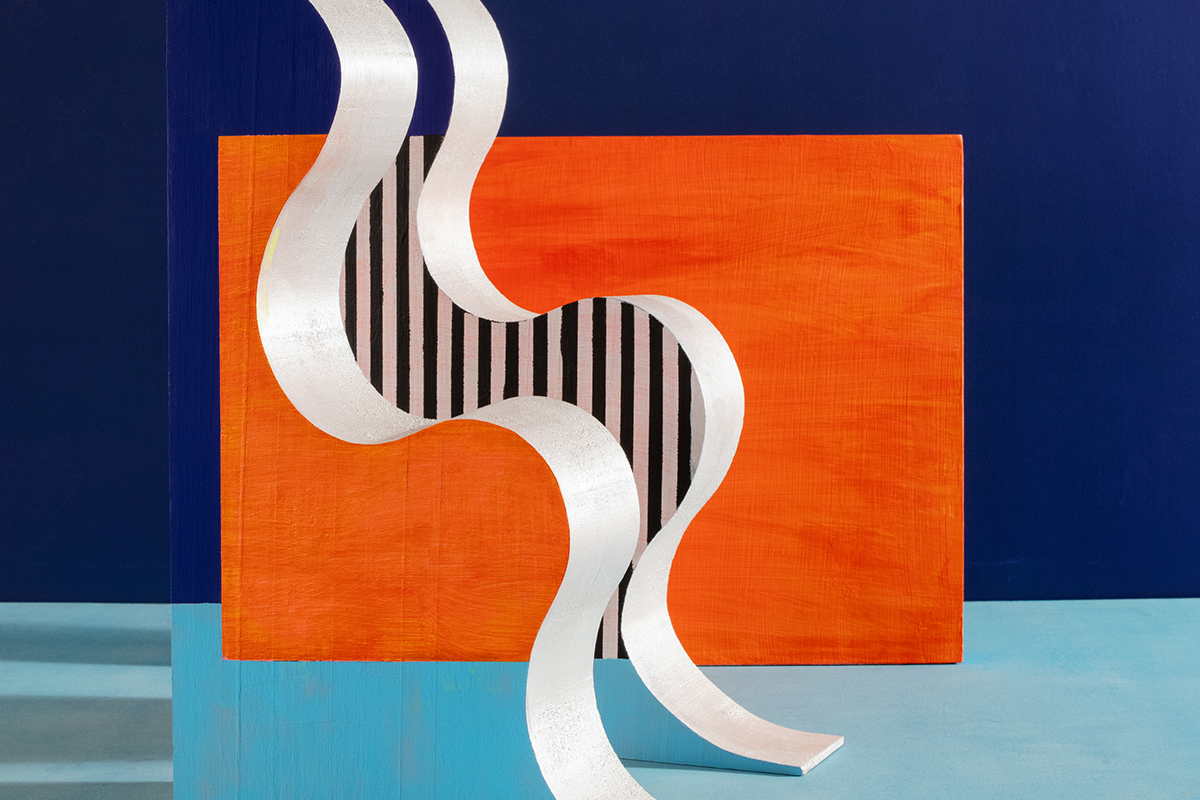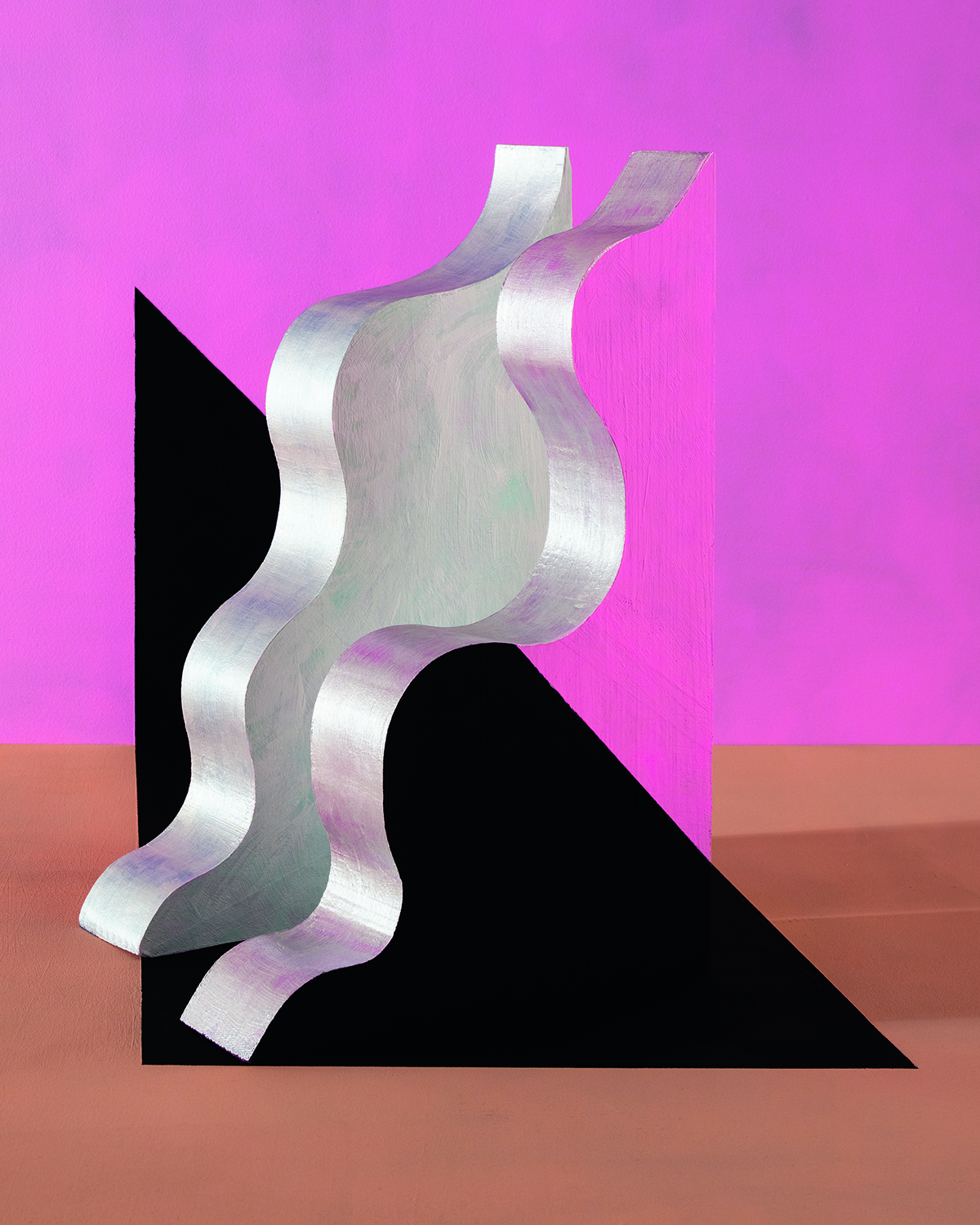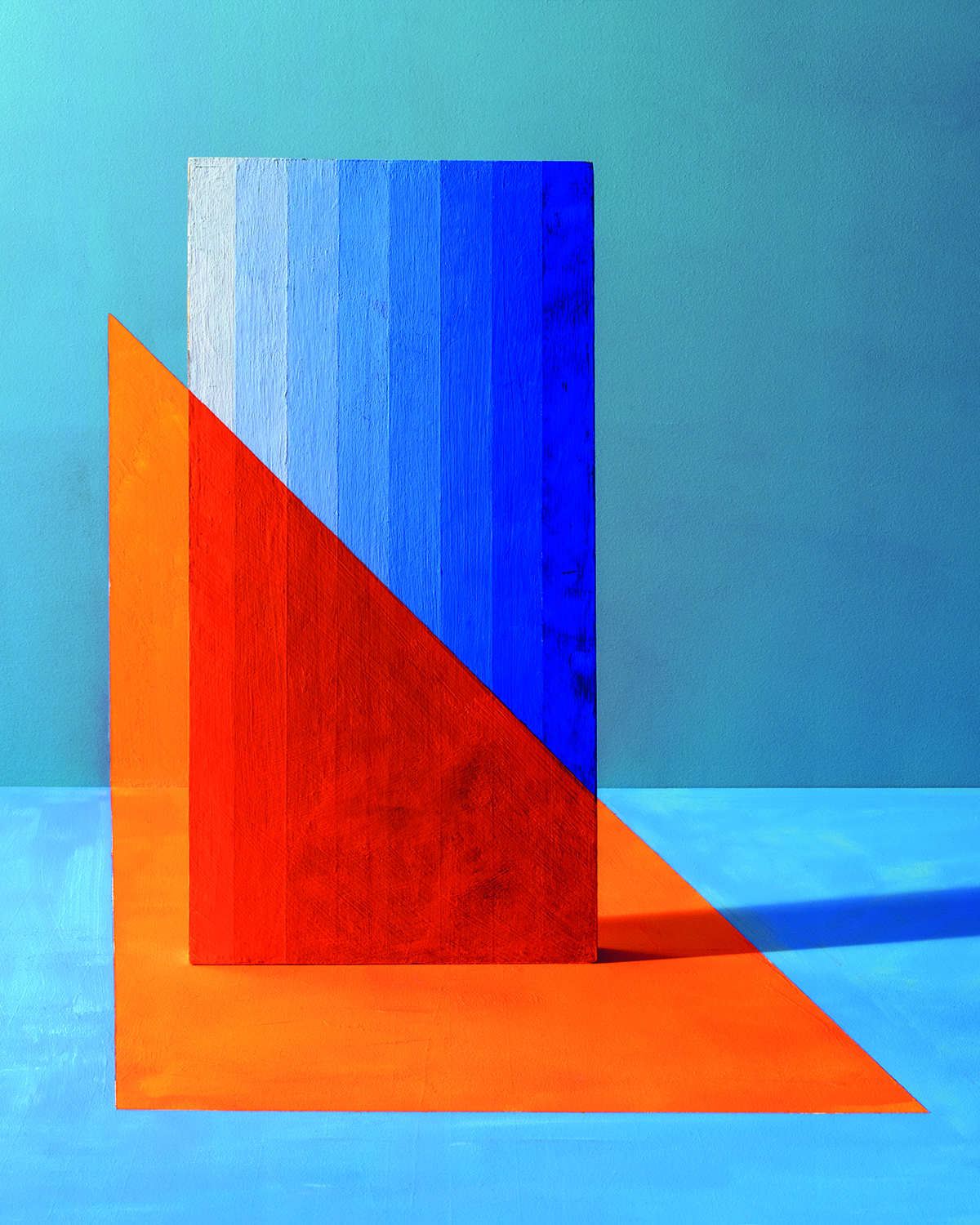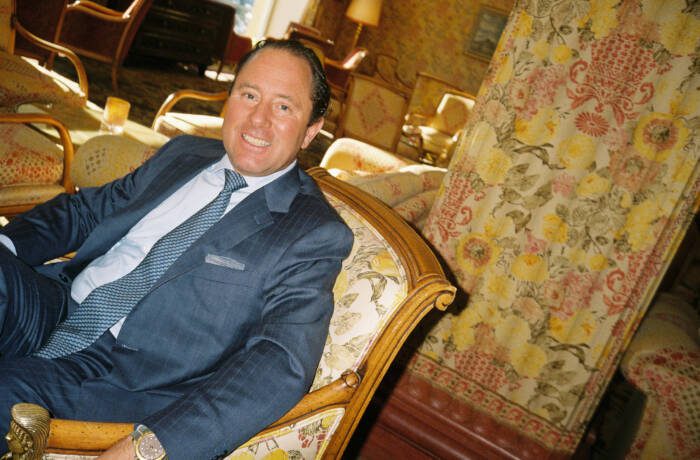
Lost at the Beach. Image courtesy of the artist
New York-based architect-turned-artist Erin O’Keefe plays tricks with our perceptions with her photographs that look like graphic paintings. The Deutsche Bank Lounge Artist for Frieze New York 2022 speaks to LUX about the transition from being an architecture professor to an artist, how the disciplines are interconnected, and her inspirations from the original Bauhaus art school in Weimar Germany. Interview by Darius Sanai
LUX: Was your dream when you were younger to be an architect or an artist?
Erin O’Keefe: I always wanted to be an artist. Although I guess what that actually means is an open question. Architecture provided a way of supporting myself that felt super interesting, and teaching meant I could explore theoretical issues that have turned out to be relevant to my art practice.
LUX: Were you always fascinated by the crossover between architecture and art?
EOK: Thinking about how architecture is represented in painting and photography has always been a source of fascination. I particularly love the wrongness of space in early Renaissance paintings – it actually feels pretty liberating. And I’m interested in the fact that most of what I know about architecture has come through images rather than visiting the actual buildings – that seems perverse, but it’s true. So you need to become a good translator to make a bridge between a picture of the thing and the thing itself, but I think it’s actually impossible to get the two things to align.
Follow LUX on Instagram: luxthemagazine
LUX: Are we right in seeing influences of the Bauhaus – the physical school itself and its teachers – in your career and your works?
EOK: Yes, absolutely – it’s a kind of touchstone for me, and the development of my practice. The sense of interconnectedness among the disciplines, and the primacy of making, were both things that feel relevant. I did the Albers colour exercises with my architecture students, which was really the beginning of thinking about the spatial impact of colour in my work.

Fever. Image courtesy of the artist
LUX: How do you set out to create your works: what is the process of conception and execution? Are you looking for a particular effect on the perception of the viewer?
EOK: I am always looking for a condition of uncertainty in the images. Something that operates in multiple ways and is a bit destabilising for the viewer. I’m interested in the friction between the ordinary tactile objects and the unreality of the image.
My studio process is quite open-ended, lots of trial and error. Small shifts or alignments in the still life can transform the reading of the image, and that moment feels like magic to me.
Colour and light play a huge part in how the objects are perceived, and what they are capable of spatially. The objects themselves are made with the awareness of how they will operate in the photograph – although it’s always a very rough guess, and most of the time I discover possibilities that I couldn’t have anticipated.

One Day Soon. Image courtesy of the artist
LUX: Please tell us a little about some of the works at Frieze NY.
EOK: The consistent focus of my work is the gap between the real condition and its representation in the photograph. For the work at Frieze, I became interested in perspective correction – meaning I can paint shapes on the ground and back wall of my still-life set-up that appear very differently in the image – a trompe-l’oeil situation in reverse. I’m also using paint in these photographs as a kind of camouflage to confuse or amplify a spatial condition.
LUX: What kind of a visual artist do you describe yourself as?
EOK: At this point, a photographer, as a way of underlining what these images are. People often mistake them for paintings, but the fact that they are photographs that utilise the language of painting feels like an important distinction.
Read more: Uplifting New Paintings by Sassan Behnam- Bakhtiar
LUX: Do you still teach and if not, will you ever teach again?
EOK: I really loved teaching, but I’m glad to have the time and attention to devote to my practice. I do miss the studio interaction – architectural education is pretty unique. I have no plans to teach in the future, but who knows?
Find out more: erinokeefe.com
This article appears in the Summer 2022 issue of LUX








